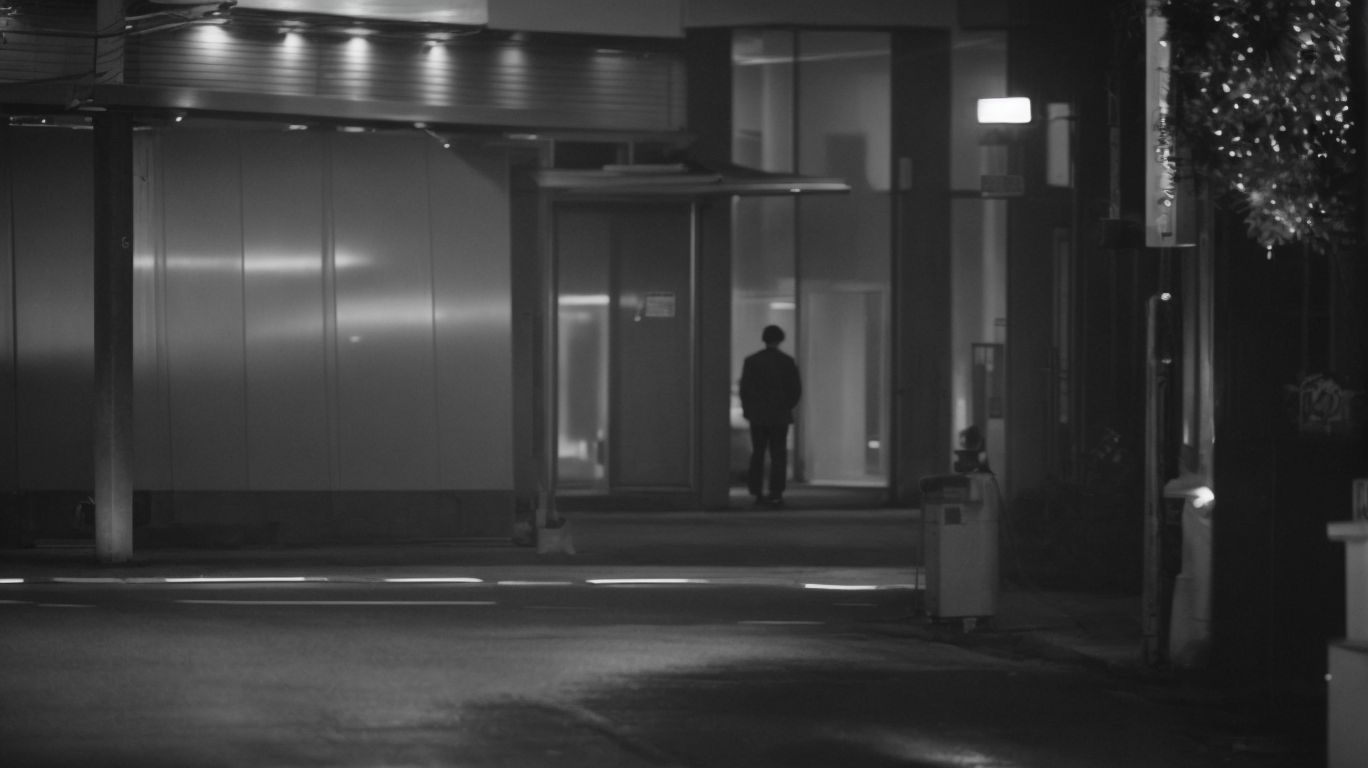Have you ever wondered why we tend to categorize people into groups based on certain characteristics? Social categorization, a concept in psychology, plays a significant role in how we perceive others and behave towards them.
In this article, we will delve into the different types of social categorization, how they are formed, and the consequences they can have on society. We will explore ways to reduce the negative effects of social categorization through education, awareness, and contact theory. Let’s unravel the complexities of social categorization together.
Contents
- 1 What is Social Categorization?
- 2 What Are the Different Types of Social Categorization?
- 3 How Do We Form Social Categories?
- 4 What Are the Consequences of Social Categorization?
- 5 How Can We Reduce the Negative Effects of Social Categorization?
- 6 Frequently Asked Questions
- 6.1 What is social categorization?
- 6.2 How does social categorization impact our behavior?
- 6.3 What role does social categorization play in psychology?
- 6.4 How does social categorization affect our self-identity?
- 6.5 Can social categorization be positive?
- 6.6 How can we reduce the negative effects of social categorization?
What is Social Categorization?
Social categorization refers to the cognitive process through which individuals classify themselves and others into distinct social groups based on shared characteristics, beliefs, or attributes.
This process plays a crucial role in shaping social identities, self-concepts, and group memberships. According to social identity theory, individuals categorize themselves based on the groups to which they belong, and this classification influences their perceptions and behaviors towards members of their own group and those outside it.
Through social categorization, people create a framework for understanding themselves and others, which in turn affects intergroup interactions, stereotypes, and prejudices. Self-concept, defined as an individual’s perception of oneself, is closely linked to how one categorizes oneself in relation to different social groups.
How Does Social Categorization Affect Our Perception of Others?
Social categorization significantly influences our perception of others by shaping the formation of stereotypes, fostering ingroup-outgroup dynamics, and structuring cognitive organization around social constructs.
These stereotypes are generalizations about groups of people that can be positive or negative, leading to biased judgments and behaviors towards individuals based on their group membership. The outgroup homogeneity effect further exacerbates this by perceiving members of outgroups as more similar to each other than they really are. This effect can lead to increased prejudice and discrimination towards those outside one’s own group. As a result, our cognitive organization is heavily influenced by these social constructs, impacting how we understand and interact with the world around us.
What Are the Different Types of Social Categorization?
Various types of social categorization exist, including distinctions between social groups, the identification of ingroup versus outgroup members, and the delineation of boundaries within different social contexts.
One prevalent form of social categorization is based on race, where individuals are often placed into mutually exclusive groups according to physical characteristics.
This can lead to the creation of ingroups, where individuals share a common racial identity, and outgroups, who are perceived as different based on their racial attributes.
Gender also serves as a significant basis for social categorization, influencing social roles, expectations, and interactions within various societies.
Ingroup and Outgroup
Ingroup and outgroup distinctions play a pivotal role in social categorization, shaping individuals’ perceptions, attitudes, and behaviors towards members of their own group (ingroup) versus those outside it (outgroup).
Social biases often arise through the process of ingroup and outgroup categorization, where individuals tend to favor their ingroup while exhibiting prejudice or hostility towards outgroup members.
This phenomenon is deeply rooted in social identity theory, which postulates that a person’s self-concept is heavily influenced by their group memberships, leading to a desire to enhance their own group’s status and differentiate it from others.
Intergroup dynamics further complicate these interactions, as competition, stereotypes, and perceived threats can intensify divisions between ingroups and outgroups, fueling societal tensions and contributing to intergroup conflicts.
Stereotypes
Stereotypes are cognitive shortcuts or generalizations based on social categories that influence our perceptions, reactions, and judgments about individuals or groups, often manifesting in spatial biases and affecting reaction times in cognitive tasks.
These mental constructs play a significant role in shaping the way we interact with the world around us, as they provide a framework for understanding and categorizing people and situations quickly.
It is essential to recognize that while stereotypes can sometimes be convenient in processing vast amounts of information efficiently, they can also lead to oversimplified and potentially inaccurate views of others.
Challenging stereotypes through education and awareness can help individuals overcome biases and foster more inclusive communities.
Prejudice
Prejudice involves preconceived negative attitudes or beliefs toward individuals or groups based on their social category, often influenced by the social environment, spatial terms, and the characteristics of research participants in experimental settings.
This phenomenon not only affects personal interactions but also permeates through societal structures, shaping policies and institutions. It is crucial to acknowledge that prejudice is not merely an individual trait but a product of complex interactions within the social environment. This notion emphasizes the significance of understanding the research participants’ backgrounds, as their demographic composition can influence the prevalence and manifestations of prejudice in various contexts. By considering these factors, researchers can gain a more comprehensive insight into the dynamics of prejudice and its impact on society.
Discrimination
Discrimination involves differential treatment or behaviors towards individuals or groups based on their social categorization, often influenced by spatial organization, spatial-numerical associations of response codes, and experimental conditions in research settings.
Individuals may experience discrimination based on various factors such as race, gender, religion, or socio-economic status, leading to disparities in treatment and opportunities.
Studies on spatial organization have shown that physical proximity may influence discriminatory behaviors, with closer spatial relationships often correlating with more favorable treatment.
Moreover, experiments designed to measure implicit biases have revealed unconscious preferences that contribute to discriminatory actions even among individuals who consciously oppose such behaviors.
How Do We Form Social Categories?
The formation of social categories is influenced by cognitive processes that allow individuals to classify, organize, and structure information about themselves and others based on social constructs, as evidenced by research findings from various experiments.
These cognitive mechanisms play a critical role in how individuals perceive and interpret social information. Through processes like categorization and schema formation, people create mental shortcuts that help them navigate complex social environments. Social constructs, such as stereotypes and social norms, further shape the way social categories are constructed and maintained.
Experimental studies have provided valuable insights into the formation of social categories. They have shown that individuals tend to categorize others based on salient features or shared characteristics, leading to the development of in-group and out-group distinctions.
What Role Does Culture Play in Social Categorization?
Culture plays a critical role in shaping social categorization practices, with disciplines like women’s studies offering valuable insights into the interplay between cultural contexts, spatial organization, and spatial-numerical associations within diverse social groups.
Through the lens of women’s studies, researchers delve into how cultural factors influence not only the physical layout of spaces but also how individuals perceive and navigate these spaces. Spatial organization, in this context, goes beyond mere physical arrangement to encompass the social norms and power dynamics that dictate who occupies which spaces.
When examining social categorization, it becomes evident that cultural norms and values heavily influence how individuals classify themselves and others, often leading to the creation of hierarchies based on gender, ethnicity, or other markers of identity.
What Are the Consequences of Social Categorization?
Social categorization can lead to various consequences, including the development of spatial biases, the proliferation of negative attitudes towards certain social categories, and the reinforcement of group-based distinctions in societal interactions.
When individuals are placed within specific social categories, it can result in a tendency to view those outside their group with suspicion or distrust, contributing to the negative attitudes that permeate intergroup relations. These biases can influence how people perceive and interact with others, often leading to stereotypes and discriminatory behaviors.
Spatial biases can arise as a result of social categorization, where certain groups are allocated different physical spaces or resources based on their perceived social category. This division can further exacerbate inequalities and perpetuate segregation within communities.
Us vs. Them Mentality
The ‘Us vs. Them’ mentality, often perpetuated by social categorization processes, highlights the spatial organization of group identities, differences in cognitive reaction times towards ingroup versus outgroup members, and the role of social constructs in fostering intergroup distinctions.
Research in social psychology has delved into understanding how individuals navigate these distinctions, showcasing the complexities inherent in human interactions. Studies have shown that individuals exhibit quicker reaction times when processing information related to their ingroup as opposed to the outgroup, hinting at underlying biases that contribute to the ‘Us vs. Them’ mindset.
The influence of social constructs, such as norms, values, and stereotypes, further solidifies these group dynamics, shaping perceptions and behaviors towards those deemed as part of the ‘Us’ or ‘Them’ categories. This intricate interplay between cognition and societal norms sheds light on the deep-rooted nature of intergroup dynamics.
Negative Attitudes and Behaviors
Social categorization can contribute to the development of negative attitudes and behaviors, often fueled by stereotypes, rigid group memberships, and underlying social biases that influence interactions within and across social groups.
These negative attitudes and behaviors can hinder genuine connections and understanding between individuals, perpetuating misconceptions and barriers to meaningful communication. Stereotypes, in particular, play a significant role in shaping these preconceived notions about different social groups, often leading to discriminatory treatment and biased perceptions.
The influence of social bias can reinforce these negative dynamics, fostering an environment where individuals are judged based on assumptions rather than personal qualities or characteristics. This phenomenon not only impacts individual relationships but also contributes to larger societal issues, such as discrimination and inequality.
Ingroup Favoritism
Ingroup favoritism, a common outcome of social categorization processes, reflects biases in spatial orientations, the influence of social constructs on group preferences, and the tenets of social identity theory that underpin ingroup solidarity and cohesion.
When individuals categorize themselves and others into distinct groups, spatial biases may arise, leading to a tendency to favor those within one’s own identified group over outgroup members. These spatial biases can manifest in various ways, impacting interactions, decision-making, and perceptions within social contexts. Social constructs play a pivotal role in reinforcing ingroup favoritism, shaping attitudes and behaviors towards group members based on shared characteristics or affiliations.
How Can We Reduce the Negative Effects of Social Categorization?
Addressing the negative consequences of social categorization requires interventions that target underlying cognitive processes, challenge spatial-numerical associations of response codes, mitigate social biases, and promote inclusive practices within diverse social contexts.
One effective strategy to counteract such adverse impacts is through implementing interventions that facilitate a more nuanced understanding of the spatial-numerical association and its influence on cognition. By challenging the ways in which individuals instinctively link spatial positions with numerical values, it becomes possible to disrupt automatic categorization processes.
Addressing social biases entails creating environments that actively promote awareness and recognition of ingrained biases, encouraging individuals to confront and unlearn prejudicial attitudes. Through fostering open dialogue and encouraging empathy, these interventions can lead to a more inclusive and equitable social fabric.
Education and Awareness
Education and awareness initiatives play a crucial role in combating the negative effects of social categorization by engaging individuals in informative interventions, experimental studies, and promoting nuanced mental representations that challenge stereotypical beliefs and biases.
Through multifaceted approaches encompassing cognitive psychology, social neuroscience, and cognitive behavioral therapies, researchers delve deep into the intricate workings of human cognition in response to various social cues and stimuli. By conducting carefully designed experiments that assess implicit biases and perceptual distortions, scientists aim to uncover the underlying mechanisms shaping individuals’ mental representations of different social groups.
Contact Theory
Contact theory offers a framework for reducing social biases and intergroup conflicts by promoting positive interactions, reshaping spatial organizations, fostering mutual understanding through shared spatial terms, and challenging ingrained biases that stem from social categorization processes.
When examining the principles of contact theory, it becomes evident that spatial reconfigurations play a crucial role in altering perceptions and dismantling prejudices ingrained within society. Utilizing shared spatial terms, individuals can transcend barriers and establish common ground, fostering empathy and respect. Strategies to counteract social biases must encompass ongoing education, open dialogues, and promoting empathy to create a more inclusive and understanding community.
Equal Status Contact
Promoting equal status contact between ingroup and outgroup members can help challenge outgroup homogeneity biases, alter cognitive reaction times towards different social categories, and disrupt spatial-numerical associations that contribute to ingroup-outgroup distinctions perpetuated by social categorization.
One of the key ways in which equal status contact addresses these biases is by fostering a sense of shared identity and reducing the tendency to view individuals solely through the lens of their group membership. This can lead to increased empathy, understanding, and cooperation among diverse groups.
By engaging in cooperative tasks or shared goals, individuals are more likely to focus on their commonalities rather than their differences, thus breaking down barriers and reducing prejudice.
Studies have shown that exposure to diverse perspectives through sustained interaction can lead to more positive attitudes towards outgroup members, ultimately weakening the cognitive shortcuts that underlie outgroup homogeneity effects.
Frequently Asked Questions
Social categorization is a cognitive process in which individuals classify others into different groups based on common characteristics, such as race, gender, age, or social status.
Social categorization can influence our behavior by creating stereotypes and biases towards certain groups, leading to discrimination and prejudice.
Social categorization is an important concept in social psychology, as it helps us understand how individuals perceive and interact with others in society.
Social categorization can play a significant role in shaping our self-identity, as we often define ourselves based on the groups we belong to and the groups we are perceived to belong to by others.
While social categorization is often associated with negative consequences, it can also have positive effects, such as promoting a sense of belonging and creating a sense of community among individuals.
To reduce the negative impact of social categorization, we can actively challenge stereotypes and biases, promote diversity and inclusion, and encourage intergroup interactions and understanding.



